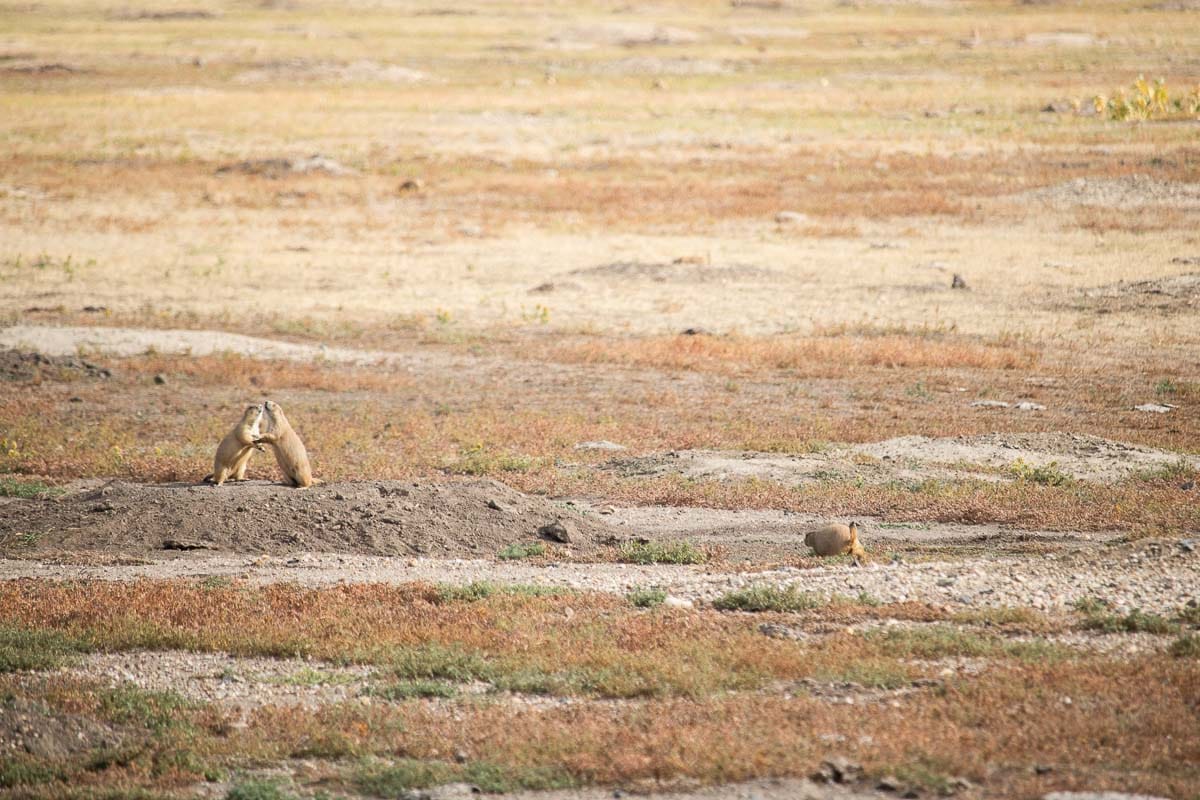Prairie Dogs in Badlands-Conata Ecosystem Infected With Plague
One of the most iconic Great Plains mammals, prairie dogs are always a fun and fascinating sight in Badlands National Park.
However, these social animals are, unfortunately, also susceptible to plague.
Prairie Dogs in Badlands-Conata Ecosystem Infected With Plague
The National Park Service and U.S. Forest Service have confirmed plague as the cause of a prairie dog die off in Badlands National Park, Buffalo Gap National Grassland, and the greater Conata-Badlands ecosystem, in South Dakota based on a test result received 5/31.
The risk to humans remains low, however, plague is concerning. The disease has not been detected in Conata Basin since 2009, when it was responsible for killing more than 80 percent of the remaining population black-footed ferrets, one of the most endangered mammals in the world.
Plague is a non-native bacterial disease that occurs in rodents and their fleas throughout the western United States. It was introduced into the U.S. from rats aboard ships in the early 1900’s and has since become endemic through the western U.S.

Is Plague Dangerous to Humans?
Approximately seven human cases occur every year, primarily in the southwestern U.S. and California. Most cases are transmitted through the bite of an infected flea, but humans can also be infected through contact with infected rodents, including animal carcasses, or by breathing infectious particles from an infected animal, sick pet, or sick human.
South Dakota has never reported a human plague case, although cases in rodents such as prairie dogs were first reported in 2005.
Symptoms usually begin 2-6 days after exposure and include flu-like symptoms such as fever, chills, and muscle aches, as well as painful swelling at the site of a flea bite and the nearest lymph node. Symptoms can progress to blood infection and severe respiratory illness if not treated promptly.
Plague can be treated with antibiotics but can be fatal if treatment is delayed. Although rare, infections acquired by breathing in infectious bacteria develop symptoms within 1-3 days and are most often fatal if not treated shortly after the onset of symptoms.
Plague is a rare disease but is a risk throughout much of the western United States. It can be prevented by practicing the following recommendations:
- Avoid contact with rodents and their fleas and burrows.
- Wear insect repellent when working or recreating outdoors. Wear long pants tucked into socks and closed-toe shoes.
- Never touch or approach a sick or dead animal, and never feed wildlife.-Do not pitch tents near rodent burrows.
- Keep pets leashed and current on a flea and tick preventative.
- Know the signs and symptoms of plague. If you develop fever, chills, swelling at the site of an insect bite or nearby lymph node, seek medical care immediately and inform your doctor you may have been exposed to plague.
“We are concerned about the impacts to the black-footed ferret population and are taking necessary action to protect this important keystone species,” said Eric Veach, Superintendent of Badlands National Park. “Extensive conservation efforts in 2009 to manage the spread of plague were able to preserve a black-footed ferret population in the Conata-Badlands ecosystem, where the largest free-ranging black-footed ferret population in the world now resides.”
The National Park Service, U.S. Forest Service, and conservation partners are working to apply emergency flea control agents to stop the further spread of plague and to monitor for plague activity in the Conata-Badlands ecosystem to protect the black-footed ferret population and reduce any risks to human health. Additionally, black-footed ferrets are captured and vaccinated against plague.
Additional information about plague can be found at www.cdc.gov/plague.






